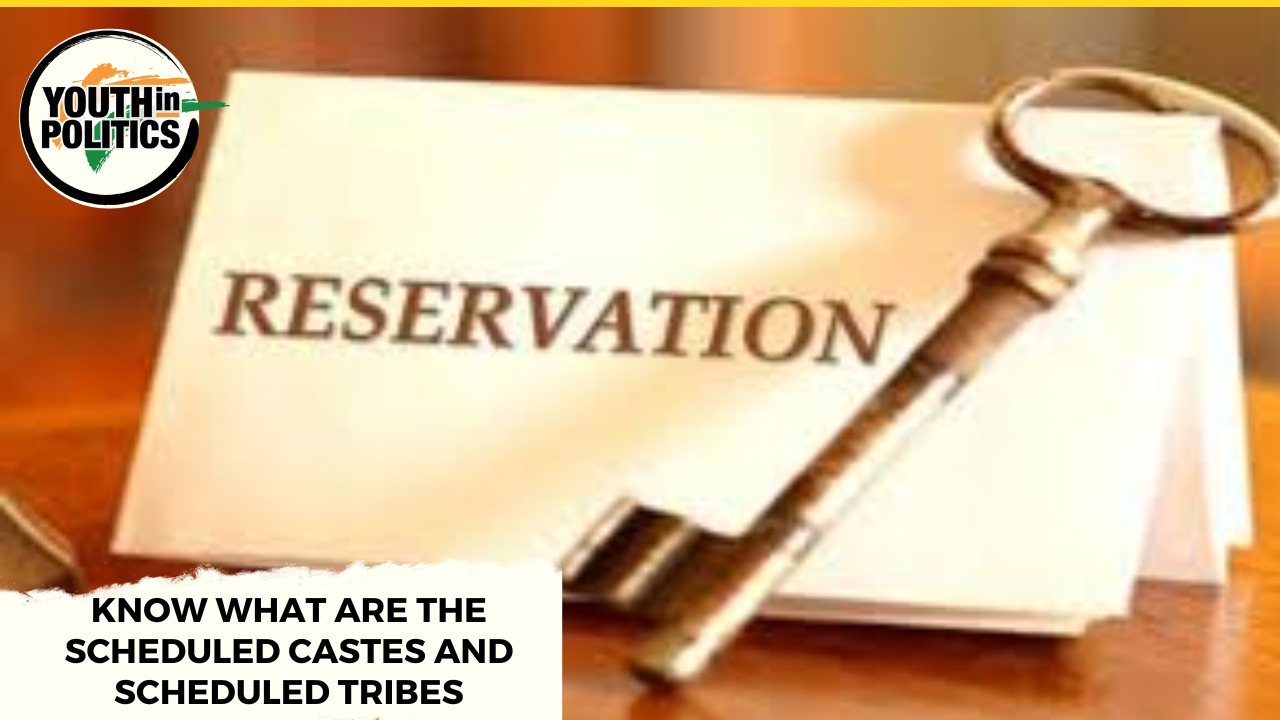
By Zaid Chaudhary
Home Minister Amit Shah on October 4 announced the inclusion of the hill community of Jammu and Kashmir in the Scheduled Tribe i.e. ST. Addressing a rally in Rajouri, Shah said, “Injustice has been done to you so far. Did you get a reservation earlier? Modi ji cleared the way for reservation by removing Article 370. The path to ST reservation has now been cleared.
Let us know What are the Scheduled Castes and Scheduled Tribes? What is the origin of these words? How can a caste be included in SC or ST?
What is a Scheduled Caste?
Scheduled Caste i.e. SC is called such class, which is a victim of untouchability and oppression. who are kept isolated from the mainstream. In common parlance, they are also called Dalits or Harijans.According to the 2011 census, the scheduled castes population in India is 16.6 crore. It is 16% of the country’s population. They are counted in the census held every 10 years.
What are Scheduled Tribes?
Scheduled Tribes i.e. ST is a government list of groups that are usually isolated from mainstream society. These people have a different society of their own and their customs are different. These people follow it by making their own rules and regulations. Such people usually live in forests and mountains.Their primitiveness, geographical isolation, social, educational and economic backwardness distinguish them from other ethnic groups. In common parlance, they are called tribals.Scheduled Tribes are also counted every 10 years. According to the 2011 census, their population is close to 10.43 crore. It is more than 8% of the total population of the country.There are 705 Scheduled Castes living across the country.There are 705 Scheduled Castes living across the country.
What is OBC?
These are the class of castes that are socially and educationally backward. They are also called OBCs, backward castes or backward.Since independence, OBCs are not counted in the census. However, people from backward classes are demanding it in the census.
Then who are the general castes?
The group of castes which are neither SC, ST nor backward class i.e. OBC. In common parlance, they are also called savarna or general caste.
Where did the word Scheduled Caste come from?
The word Scheduled Caste was first used by the Simon Commission. This commission came to India in 1928 under the leadership of British MP Sir John Simon. Its purpose was to review the constitutional reform carried out in 1919. Based on its report, the Government of India Act 1935 was enacted.In this Act, the word Scheduled Caste was included in any law of India for the first time. The Act provided for a separate constituency for scheduled castes.A separate constituency means that only scheduled caste candidates will stand in that fixed constituency. This system is adopted to give representation to small communities in Parliament and assemblies.According to Dr. Ambedkar, scheduled castes were called broken-men in ancient times. That is, people who are fragmented or who are not perfect.Mahatma Gandhi called him Harijan. However, the first use of the word Harijan was by Narsi Mehta in the bhajan ‘Vaishnav Jan To Tene Kahiye…’ happened in. The 1931 census used the word Dalit for them.Article 341 of the Constitution of India treats such caste, race or tribal group as Scheduled Castes, which the government includes in the list of Scheduled Castes.Mahatma Gandhi termed the dalit community as “misplaced” and called them “Harijans” (children of God).” He also brought out three magazines called ‘Harijan’.Mahatma Gandhi termed the dalit community as “misplaced” and called them “Harijans” (children of God).” He also brought out three magazines called ‘Harijan’.
How is a caste included in SC and ST?
Under Article 342 of the Constitution, only Parliament has the right to include any caste in the list of SC or ST. If a caste is to be included in the SC or ST, then the state government first sends a proposal related to it to the central government.The central government sends the proposal to the Registrar General of India. After getting the clearance of the Registrar General, it is sent to the SC or ST Commission. After getting approval here, it goes to the cabinet. After the approval of the Cabinet, it comes to Parliament and after getting approval in Parliament, the President issues an order related to it. Then it becomes law.
What does Amit Shah want to achieve by giving ST status to the hills in Jammu and Kashmir?
The population of hills in Jammu and Kashmir is about 6 lakh. Of these, 55% are Hindus and the rest are Muslims. Rajouri and Baramulla in Jammu and Kashmir have a large population of hills. That is, Home Minister Amit Shah has played a big political card by giving ST status to the hills.Because for the first time after the recent delimitation, scheduled tribes i.e. ST have been given 10% reservation in the Jammu and Kashmir Assembly. 9 seats have been reserved for Scheduled Tribes, while 7 seats are reserved for Scheduled Castes i.e. SC.

Leave a Reply